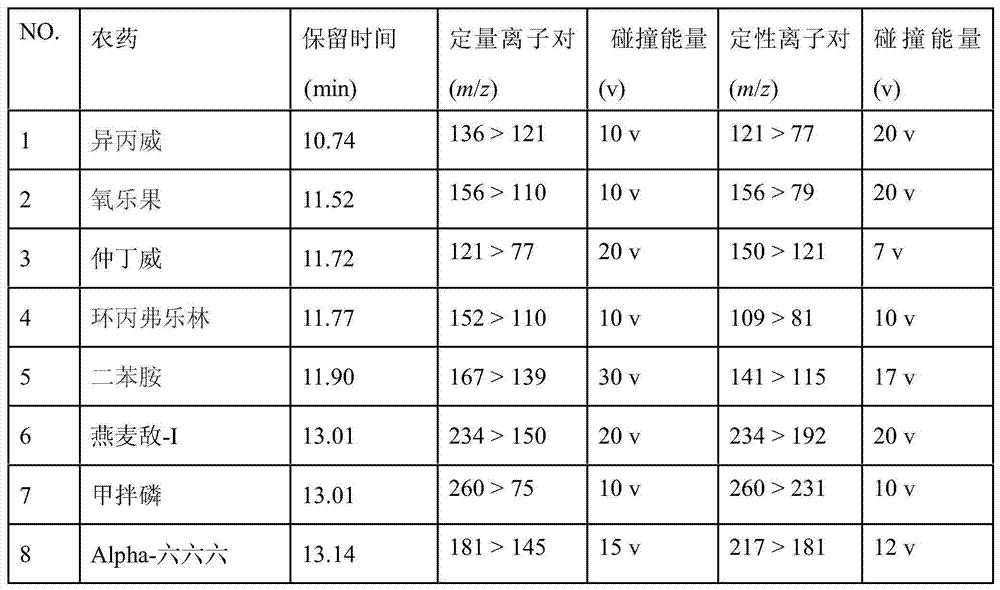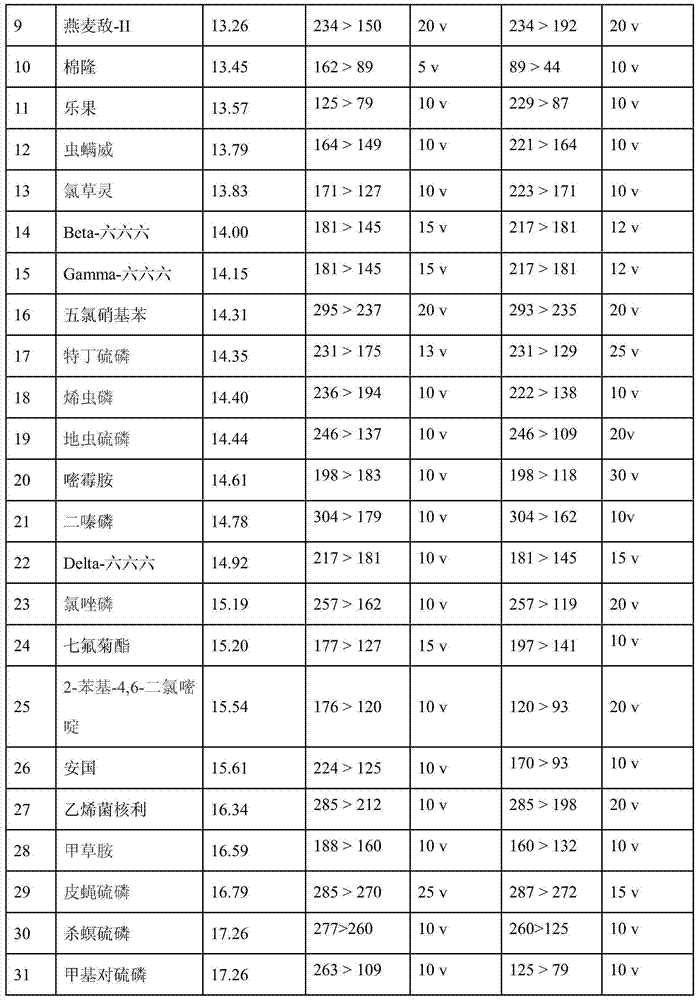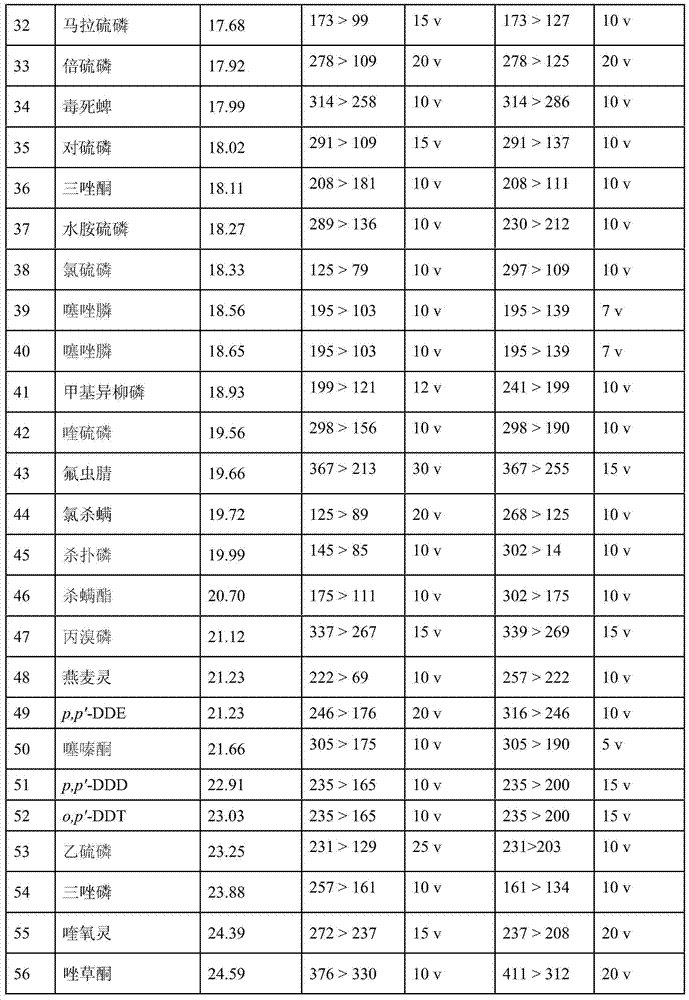Detecting method of pesticide multi-residue in fresh tea leaves
A technology for the detection of multiple pesticide residues and detection methods, which is applied in the field of detection of multiple pesticide residues in fresh tea leaves. It can solve the problems of lack of detection methods and reports for multiple pesticide residues in fresh tea leaves, and achieve matrix interference avoidance, high sensitivity, and improved detection efficiency. Effect
- Summary
- Abstract
- Description
- Claims
- Application Information
AI Technical Summary
Problems solved by technology
Method used
Image
Examples
Embodiment Construction
[0013] Method of the present invention comprises the following steps:
[0014] 1) Place the homogenized fresh tea sample in a centrifuge tube, add acetonitrile and vortex;
[0015] 2) Vortex after adding anhydrous magnesium sulfate and sodium chloride;
[0016] 3) centrifugal;
[0017] 4) take the centrifuged supernatant for purification;
[0018] 5) Detection by gas chromatography-tandem mass spectrometry.
[0019] The above purification is:
[0020] Clean up with PSA / GCB solid phase extraction column, pre-wash with acetonitrile-toluene; take the supernatant after centrifugation, load the sample; rinse with acetonitrile-toluene; collect the eluate, and concentrate it to near dryness by rotating under reduced pressure; n-hexane + Make up to volume with acetone. Example:
[0021] 1) Weigh 5g of homogenized fresh tea leaves into a 50mL Teflon centrifuge tube, add 20mL of acetonitrile, and vortex for 1 minute;
[0022] 2) Add weighed 4g of anhydrous magnesium sulfate and 1...
PUM
 Login to View More
Login to View More Abstract
Description
Claims
Application Information
 Login to View More
Login to View More - R&D
- Intellectual Property
- Life Sciences
- Materials
- Tech Scout
- Unparalleled Data Quality
- Higher Quality Content
- 60% Fewer Hallucinations
Browse by: Latest US Patents, China's latest patents, Technical Efficacy Thesaurus, Application Domain, Technology Topic, Popular Technical Reports.
© 2025 PatSnap. All rights reserved.Legal|Privacy policy|Modern Slavery Act Transparency Statement|Sitemap|About US| Contact US: help@patsnap.com



